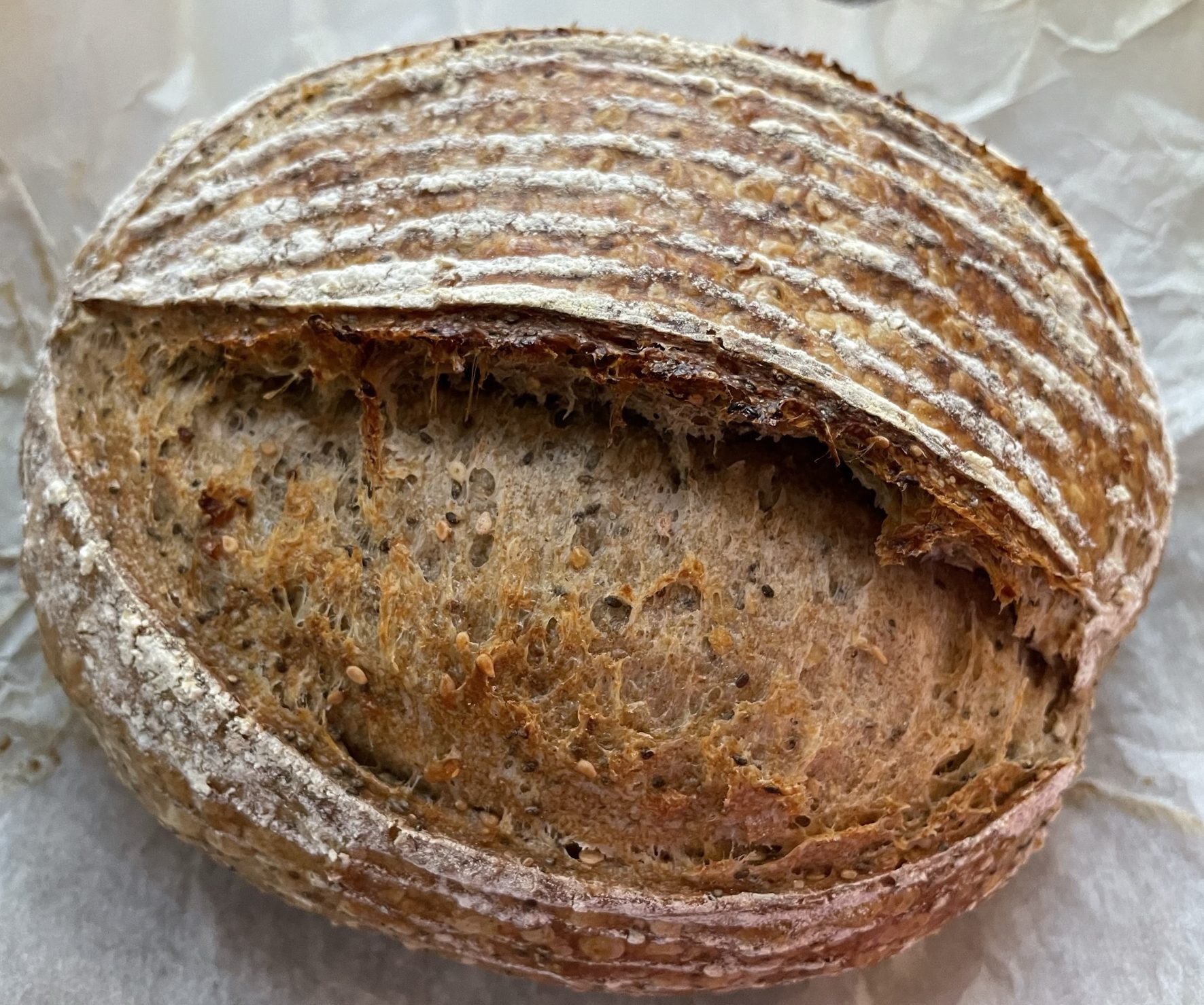This sourdough glossary will help you understand some of the terminology used
Basics of Sourdough
Basics of Sourdough
Non-essential ingredients added to the dough for taste, added nutrition etc.
A 30-45 minute rest period after mixing flour, water and sourdough starter, before adding salt and other ingredients. It begins gluten development and is said to allow the flour to fully absorb the water without being inhibited by the salt.
A way of expressing formulas in which the flour weight represents 100% and all other ingredients are a percentage of the flour weight. See Bread Math for more details.
A French-style basket usually made of rattan designed to hold and shape a rising loaf. When the loaf is fully risen, it's turned out of the banneton onto a pan or hot stone to bake.
An Italian term for a pre-ferment or levain made with flour, water (60% hydration) and 1% yeast.
This process occurs after all the mixing of ingredients and ends when the dough is cut and shaped. As the name implies, this is the step when the dough is fermenting in a large, bulk mass. During this time, all the microbial activity is taking place.
The appearance and texture of the interior of the bread. Breads may have "open crumb" with lots of irregular holes or "closed crumb" that is more fine textured.
The portion of the starter that is discarded when feeding a starter as part of its routine maintenance. Discards can be used for pancakes, crepes, lava cakes etc.
The portion of raised crust that appears during baking. This usually results where the scoring of the bread occurs.

Adding the flour and water mixture to a portion of the starter to support its growth and maintain the microbial activity.
The process where the yeast consumes sugars, producing carbon dioxide and alcohol and healthy bacteria (lactobacillus) that produce organic acids.
The protein found in wheat and other grains that gives baked goods its structure when combined with water.
The hydration percentage is the ratio of water to flour expressed as a percentage. A 100% ratio means equal parts of water and flour, by weight.
A razor-blade tool used for scoring bread.
A French term for a pre-ferment
The feeding regimen used to sustain a sourdough starter.
The rapid rise of bread once it ends the oven due to the expansion of carbon dioxide present in the dough, making bread scoring important to allow the bread to expand.
A type of starter made of equal parts of flour and water (100% hydration) with a small amount (.2%) of added yeast.
A portion of the starter together with additional flour and water that's mixed and allowed to ferment in advance of mixing the dough. For additional reading on preferments read, Jacob Burton's The Three Mother Preferments and How to Use Them.
Final rise of dough before baking. Over proofed dough will collapse in the oven. The dough needs to be just sufficiently proofed so that the last rise in the oven creates oven spring.
A mature starter that's ready to use in baking, characterized by lots of bubbles, increased volume, small rivulets across the top, and a fresh, clean, acidic aroma.
Making cuts on the surface of a proofed loaf immediately before it's baked to guide where and how the loaf expands. This facilitates improved oven spring, good internal crumb structure, and appearance.
This hand method of stretching and folding the dough allows the dough to deflate and the yeasts and microbes to redistribute. This is done at least 6 times with a resting period in between.
A culture of wild yeast and bacteria that, when properly maintained, leavens and flavors bread. This would be considered the Mother dough from which you can make the preferments for your bread.
A French term for fermented dough or pre-ferment or levain or sponge
Another term for a preferment
As the name implies, yeast cultivated in the wild. These single-celled organisms exist all around you, feeding on carbohydrates and in turn, releasing carbon dioxide.
This sourdough glossary will help you understand some of the terminology used
Here are some essential utensils and tools for sourdough baking. These basic
Baker's percentages and hydration percentages are two math concepts that are helpful
Environment It took me a while to figure out how my environment
Making GOOD and healthy sourdough bread is a labor of love. It
Many people think that scoring your sourdough is just for aesthetic purposes.
Subscibe to my Youtube Channel
Never miss another new recipe or tip & trick.